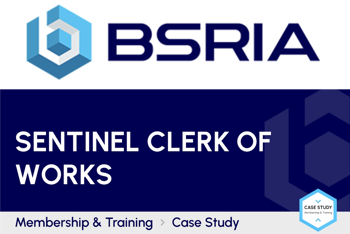Rail asset management
Rail asset management plays a critical role in the asset-intensive rail industry, ensuring efficient operations and long-term sustainability. Modern rail asset management systems integrate a combination of software, hardware, and consulting services to optimise functionality. These systems are designed to enhance asset availability while minimising operational costs and risks throughout the asset’s lifecycle. By implementing advanced technologies, railway operators can proactively address infrastructure maintenance, reducing disruptions and ensuring safer, more reliable services.
A key advantage of rail asset management is its ability to shift from reactive to predictive and preventative maintenance strategies. Instead of addressing maintenance issues as they arise, these systems gather and analyse real-time data, allowing railway operators to anticipate potential failures and implement timely solutions. This predictive approach enhances asset performance, prolongs infrastructure lifespan, and ultimately improves overall efficiency. Ensuring visibility into asset health and lifecycle management is essential for optimising rail operations and maintaining high safety standards for passengers.
The digital transformation of railway asset management is revolutionising traditional systems, enabling train companies to collect, store, and analyse critical asset data more effectively. With the integration of advanced digital solutions, railway operators can make data-driven decisions that lead to substantial financial savings and operational improvements. As technology continues to evolve, the adoption of digital asset management solutions is expected to drive further advancements in railway efficiency, sustainability, and passenger safety.
New research on the Rail Asset Management Market (The Brainy Insights) offers in-depth analysis of the Market including overall size, share, and product definitions. It also delves into supply chain analysis, examining the supply chain ratio, upstream raw materials and equipment, downstream demand analysis, and detailed import /export information.
The global rail asset management market was valued at USD 11.21 billion in 2022 and is projected to reach USD 20.61 billion by 2032, growing at a compound annual growth rate (CAGR) of 6.28% from 2023 to 2032. The increasing demand for efficient rail asset management is driven by rising government initiatives aimed at maintaining rolling stock and enhancing railway infrastructure. As populations grow and urbanisation accelerates, governments are significantly increasing their investments in rail networks to support expanding transportation needs.
Market Summary: On The Basis Of The Type, The Market Has Been Bifurcated Into
by Deployment:
- On-Premises
- Cloud
Based On The Application / End Users, The Market Has Been Divided Into
by Application:
Top Leading Companies:
Accenture plc, Alstom SA, International Business Machines Corporation (IBM), Capgemini SE, Hitachi, Ltd., Cisco Systems, Inc., L&T Technology Services Limited (LTTS), Huawei Technologies Co., Ltd., SAP SE, Siemens AG
[edit] Related articles on Designing Buildings
- Asset.
- Asset information model.
- Asset management.
- Asset management strategy.
- Asset management team.
- Creating an asset register for construction projects.
- Digital asset management.
- Economic Order Quantity EOQ.
- Enterprise asset management.
- Facilities management.
- Facilities management audit FMA.
- Facility condition assessment FCA.
- Facility condition index FCI.
- Knowledge asset management.
- Property management.
Featured articles and news
UK Infrastructure: A 10 Year Strategy. In brief with reactions
With the National Infrastructure and Service Transformation Authority (NISTA).
Ebenezer Howard: inventor of the garden city. Book review.
The Grenfell Tower fire, eight years on
A time to pause and reflect as Dubai tower block fire reported just before anniversary.
Airtightness Topic Guide BSRIA TG 27/2025
Explaining the basics of airtightness, what it is, why it's important, when it's required and how it's carried out.
Construction contract awards hit lowest point of 2025
Plummeting for second consecutive month, intensifying concerns for housing and infrastructure goals.
Understanding Mental Health in the Built Environment 2025
Examining the state of mental health in construction, shedding light on levels of stress, anxiety and depression.
The benefits of engaging with insulation manufacturers
When considering ground floor constructions.
Lighting Industry endorses Blueprint for Electrification
The Lighting Industry Association fully supports the ECA Blueprint as a timely, urgent call to action.
BSRIA Sentinel Clerk of Works Training Case Study
Strengthening expertise to enhance service delivery with integrated cutting-edge industry knowledge.
Impact report from the Supply Chain Sustainability School
Free sustainability skills, training and support delivered to thousands of UK companies to help cut carbon.
The Building Safety Forum at the Installershow 2025
With speakers confirmed for 24 June as part of Building Safety Week.
The UK’s largest air pollution campaign.
Future Homes Standard, now includes solar, but what else?
Will the new standard, due to in the Autumn, go far enough in terms of performance ?
BSRIA Briefing: Cleaner Air, Better tomorrow
A look back at issues relating to inside and outside air quality, discussed during the BSRIA briefing in 2023.
Restoring Abbotsford's hothouse
Bringing the writer Walter Scott's garden to life.
Reflections on the spending review with CIAT.
Retired firefighter cycles world to raise Grenfell funds
Leaving on 14 June 2025 Stephen will raise money for youth and schools through the Grenfell Foundation.
Key points for construction at a glance with industry reactions.























